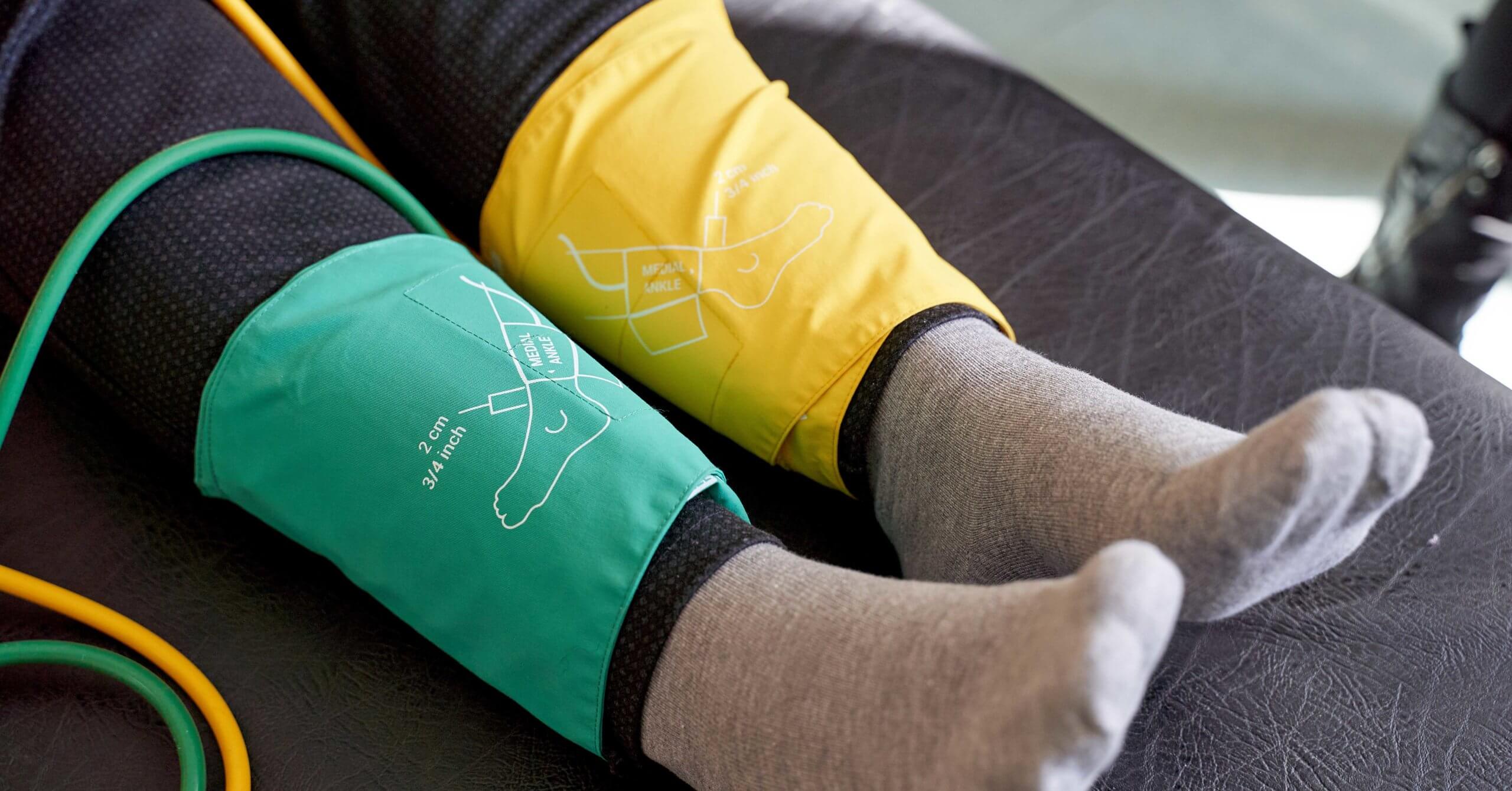Most wound care clinicians see wounds related to peripheral artery disease (PAD) on a frequent if not daily basis.
So let’s learn about PAD’s prevalence, understand the different ways it presents and best practices for managing it.
We spoke with Donald Wollheim, MD, FAPWCA, WCC, DWC, a board-certified surgeon of the American Board of Surgery, to get his insight on PAD.
With 25 years of experience in general/vascular surgery and 13 years as a wound care specialist, educator and case reviewer, Wollheim also is a clinical instructor for our Wound Care Education Institute (WCEI).
“From a wound care clinician’s point of view, it is critical to have good to excellent, oxygenated, arterial blood providing the tissues of the lower extremity to heal any wound of the leg,” Wollheim said.
Do you understand the risk factors?
Eight to 12 million Americans have PAD, especially those older than 50, according to the U.S. Department of Health and Human Services’ National Institutes of Health National Heart, Lung and Blood Institute.
Given the fact PAD is so pervasive, it’s essential for you to understand the risk factors for developing PAD and stay current on diagnosing and treating it.
Wollheim shared his insights from the most recent guideline document from the American College of Cardiology Society of Vascular Surgery Guidelines for Peripheral Artery Disease Management.
The following are facts about PAD and the various evidenced-based methods to diagnose and manage it:
- The risk of developing PAD increases with advanced age
- PAD is expected to increase as the U.S. population gets older
- Smoking increases one’s risk of developing it
- Increased prevalence of diabetes, high BMIs and hypertension in the U.S. will likely lead to higher rates
Although some PAD is asymptomatic, symptoms can include:
- Intermittent claudication: Reproducible leg discomfort in a specific muscle group during exercising and relieved with rest (the location of pain is related to the location of the narrowing).
- Nocturnal pain: Pain that occurs at night, when the leg is elevated and gravity is not helping to facilitate blood flow to the lower extremity. This is a progression of the symptoms from intermittent claudication.
- Resting pain: Is persistent pain regardless of the activity of, or position of, the lower extremity. This is a progression of the symptoms of PAD from nocturnal pain.
- Critical Limb Ischemia: Limb threatening ischemia (resting pain > 2 weeks or necrotic tissue ± with systolic BP at ankle < 50 mmHg or at toe < 30 mmHg).
Diagnosis of peripheral artery disease
- Standard of care is conducted mainly through an ankle-brachial index (ABI) study.
- You also can use the Toe Brachial Pressure Index
- If a patient has a normal ABI but abnormal symptoms, repeat the ABI following exercise.
Candidates for revascularization
There are two type of studies that can be applied to manage a symptomatic patient — physiologic non-invasive and anatomical.
Physiologic non-invasive studies quantify and/or localize the ischemia.
Anatomical studies can include an arterial duplex scan, CTA, MRI, or an invasive angiography.
How to manage an asymptomatic PAD patient
- Risk factor modification, such as tobacco cessation.
- Education of patients and caregiver for signs and symptoms of PAD progression.
- Inadequate evidence for antiplatelet or statin therapy at this time.
- No invasive treatments are recommended regardless of hemodynamic changes.
- Exercise therapy that is supervised or home-based, consisting of 30 minutes of walking three to four times a week.
- Consider obtaining an annual ABI to monitor disease progression.
Symptomatic PAD with Intermittent Claudication
Risk factor modification is key to PAD management and can include:
- Tobacco cessation
- Statin therapy (dyslipidemia)
- Maintaining an A1c < 7% (diabetic patients)
- Beta-blockers (hypertension and CAD)
- Aspirin therapy
Quality of life therapy for patients can include:
- Cilostazole: Oral phosphodiesterase type II inhibitor that is FDA approved for treating intermittent claudication. It increases maximum walking distance and improves functional status. No history of congestive heart failure is required.
- Pentoxifylline: A hemorheological agent for patients contraindicated for Cilostazole.
- Ramipril: Angiotensin converting agent for treating hypertension, congestive heart failure and prevention of renal failure in diabetic patients.
- Exercise therapy: Supervised or home-based, 30 minutes of walking three to four times a week.
Patients should have an annual ABI to show disease progression.
Management of symptomatic revascularization candidate patients
Endovascular procedures can include angioplasty and stents, intraluminal stents and intraluminal grafts. It should be noted that this is not advised for isolated infrapopliteal disease with intermittent claudication.
- Endovascular procedures are preferred over open procedures for more proximal disease (aorta to external iliac) and focal occlusive superficial femoral disease.
- For diffuse aortoiliac disease the patient can undergo endovascular or open procedures.
- Stenting in superficial femoral is also preferred over open procedures because of unsatisfactory results from focal procedures (such as failed angioplasty) and intermediate length (5-15 cm) lesions.
Open procedures are for two types of patients — those who are not candidates for or have failed from endovascular procedure. Depending on the location, autologous or prosthetic graphs will be used.
Sometimes these also are combined, such as proximal endovascular and distal open procedures.
Management of symptomatic revascularization candidate patients
According to Wollhiem, additional considerations as per the cited recommendations for optimal medical therapy include antiplatelet therapy with aspirin and/or clopidogrel and exercise programs. Antiplatelet therapy prevents platelets from collecting and forming clots.
Take a wound care course today!
What do you think?

